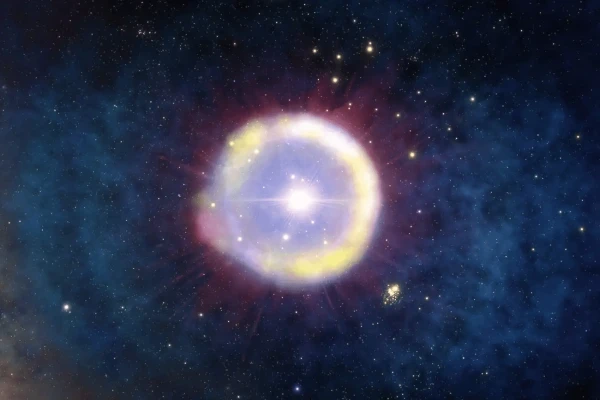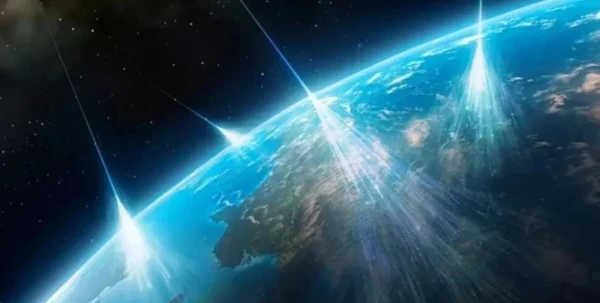
Typically, these stars are searched for through indirect signs — for example, through unusual chemical signatures in very old galaxies.
In a distant galaxy, which scientists see as it was 12.7 billion years ago, an anomalously high nitrogen content has been discovered. Such a concentration of this element may indicate the existence of giant stars with masses up to 10,000 solar masses. This discovery will help explain why supermassive black holes could have formed so early, as well as shed light on how the first galaxies formed and what processes shaped the early history of the cosmos.
Modern understanding of stellar evolution is based on observations of relatively nearby celestial bodies. For a long time, researchers believed that there is a fundamental mass limit for stars, not exceeding 120 solar masses. Beyond this threshold, internal forces would simply tear the star apart. All models that describe the evolution of galaxies, including the Milky Way, rely on this principle.
This convenient rule applies to typical conditions but is not a universal "commandment": much depends on the environment. At very high mass, a star emits a lot of radiation, and this radiation "presses" on the outer layers, causing significant material loss. As a result, the outer layers begin to blow away into space — the star actively loses substance, meaning that radiation hinders the retention of matter. Therefore, under ordinary conditions, the formation of super-heavy stars is difficult.
At the same time, observations and some modern models show that in special cases, such as low metallicity or high rates of material influx from the surrounding gas cloud, much more massive stars can form.
An example is the first generation of stars, known as Population III stars. These objects formed from primordial gas, primarily composed of hydrogen and helium, which contained almost no "metals" (in astronomy, this term refers to all elements heavier than helium). Such gas cooled poorly, allowing it to gather into denser and larger structures, which then collapsed into very massive protostars. In other words, in the early universe, conditions were favorable for the emergence of individual very massive stars — their mass could reach hundreds or even thousands of solar masses.
However, the story of massive Population III stars is merely a hypothesis. No one has observed them yet. There are, of course, candidates for this role, but they remain just candidates. Typically, these stars are searched for through indirect signs — for example, through unusual chemical signatures in very old galaxies.
It is believed that Population III stars appeared about 100–400 million years after the Big Bang, and by the time the universe was approximately 800 million years old, most had already extinguished. This suggests that their lifespan was short.
Another major mystery of the early universe is supermassive black holes, reaching masses of hundreds of millions or even billions of solar masses. Scientists find them in galaxies that formed 500–700 million years after the Big Bang. In terms of radiation, these galaxies were young, yet enormous black holes were already present at their centers.
It is thought that they simply would not have had enough time to grow to such colossal sizes from ordinary "stellar" seeds. Scientists have been trying for years to understand how these black holes became such giants so quickly and what mechanism gave them such a rapid start.















Leave a comment